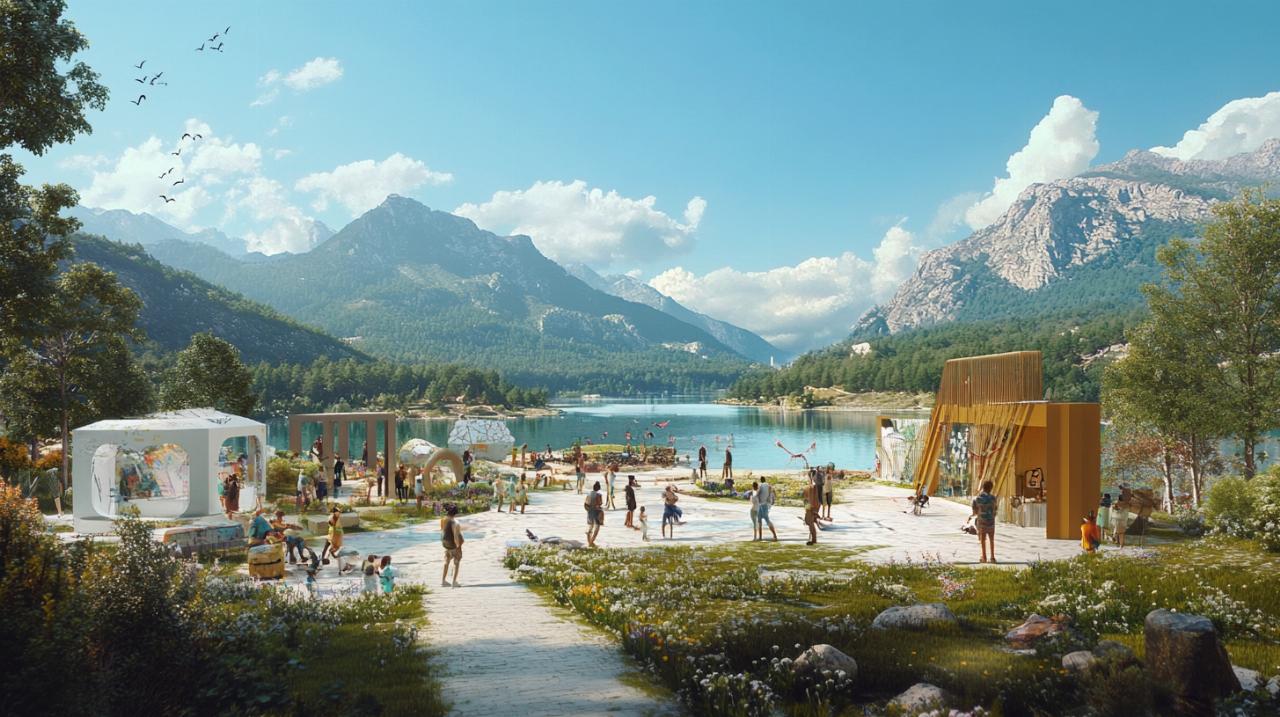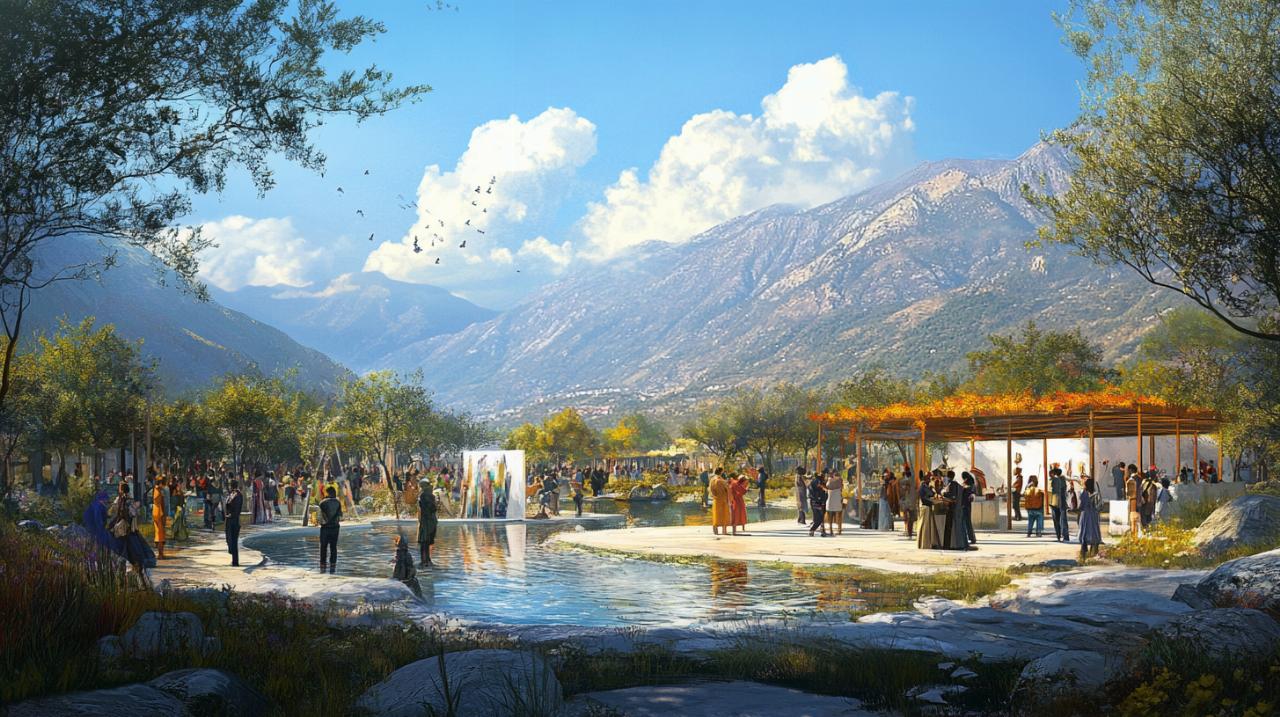Exploring art events through a philosophical lens

The gallery space has long been more than a mere repository for visual artefacts. In recent years, there has been a growing interest in examining how art events serve as platforms for philosophical exploration, inviting both creators and audiences to engage with profound questions about existence, meaning, and perception. This burgeoning dialogue between philosophy and the arts challenges us to reconsider not only what we see on the walls of museums and exhibition halls but also how we interpret and experience these encounters. By applying philosophical frameworks to contemporary exhibitions, we unlock a richer understanding of the narratives that unfold within these curated environments, transforming passive observation into active contemplation.
The Intersection of Aesthetics and Existentialism in Contemporary Exhibitions
Contemporary art events increasingly reflect a fusion of aesthetic inquiry and existential questioning, drawing on traditions that stretch back to ancient Greece yet remain vibrantly relevant today. The sensory and emotional impact of an artwork invites viewers to grapple with fundamental issues such as authenticity, identity, and the nature of reality itself. Philosophers like John Dewey and Arne Naess have underscored the importance of imaginative practices in knowledge creation, suggesting that art museums serve as vital spaces where visitors engage with art not merely as objects but as dynamic experiences that provoke thought and emotion. Nordic institutions, including the Munch Museum and the National Museum of Arts, Architecture, and Design, exemplify how curatorial strategies can animate artworks in ways that resonate deeply with existential concerns, making the act of viewing a catalyst for personal and collective reflection.
Phenomenological approaches to understanding artistic experience
Phenomenology offers a powerful lens through which to examine the lived experience of encountering art. This philosophical tradition emphasises the subjective consciousness of the observer, focusing on how artworks are perceived and felt rather than simply analysed intellectually. When visitors step into a gallery, they are not passive recipients of visual information but active participants in a process of sense-making that unfolds moment by moment. The Henie Onstad Kunstsenter and Kistefos Museum have demonstrated this principle through their innovative approaches to visitor engagement, creating environments where the boundary between observer and artwork becomes fluid. By foregrounding the embodied nature of aesthetic experience, phenomenological perspectives reveal that meaning is not fixed within the artwork itself but emerges through the interaction between the object and the viewer. This dynamic interplay transforms art events into opportunities for philosophical inquiry, where questions of perception, consciousness, and presence take centre stage.
Questions of Meaning and Authenticity in Modern Art Installations
Modern art installations often challenge conventional notions of authenticity and meaning, prompting viewers to reconsider what it means for an artwork to be genuine or truthful. The rise of post-conceptual art, as explored by philosopher Peter Osborne, highlights the philosophical character of contemporary practice, where the idea behind the work can be as significant as its material form. Clodagh Emoe's research into post-conceptual practice, which included an analysis of numerous artworks, questions the relationship between art and philosophy, asking whether there exists a distinct category of philosophical art. These inquiries resonate with broader existential themes, as artists and audiences alike grapple with the notion that meaning is not inherent but constructed through interpretation and context. The sensuous appearance of an artwork, once considered secondary to its conceptual underpinnings, is now recognised as integral to the experience, challenging the dogma that form and content can be neatly separated. This ongoing debate enriches our understanding of art events, positioning them as sites where authenticity is continually negotiated and redefined.
Deconstructing artistic intent: a hermeneutic perspective
 The hermeneutic tradition, with its focus on interpretation and understanding, provides essential tools for deconstructing the intentions that underlie artistic creation. Artists often embed symbolic narratives within their works, inviting viewers to uncover layers of meaning that extend beyond the immediately visible. This process of interpretation is neither straightforward nor singular; rather, it is shaped by the cultural, historical, and personal contexts that each observer brings to the encounter. Jacques Maritain and Etienne Gilson, whose philosophical theories have been applied to the analysis of artworks, emphasise the importance of engaging with art through a reflective and contemplative mindset. By adopting a hermeneutic perspective, we recognise that every gallery visit is an act of co-creation, where the viewer's engagement transforms the artwork into a living dialogue. This approach underscores the relevance of philosophical inquiry to contemporary art criticism, revealing that the meanings we derive from art events are as much about our own questions and experiences as they are about the artist's original vision.
The hermeneutic tradition, with its focus on interpretation and understanding, provides essential tools for deconstructing the intentions that underlie artistic creation. Artists often embed symbolic narratives within their works, inviting viewers to uncover layers of meaning that extend beyond the immediately visible. This process of interpretation is neither straightforward nor singular; rather, it is shaped by the cultural, historical, and personal contexts that each observer brings to the encounter. Jacques Maritain and Etienne Gilson, whose philosophical theories have been applied to the analysis of artworks, emphasise the importance of engaging with art through a reflective and contemplative mindset. By adopting a hermeneutic perspective, we recognise that every gallery visit is an act of co-creation, where the viewer's engagement transforms the artwork into a living dialogue. This approach underscores the relevance of philosophical inquiry to contemporary art criticism, revealing that the meanings we derive from art events are as much about our own questions and experiences as they are about the artist's original vision.
Interpreting symbolic narratives within gallery spaces
Gallery spaces are carefully constructed environments where symbolic narratives unfold through curatorial choices, spatial arrangements, and the juxtaposition of artworks. The way in which an exhibition is curated can profoundly influence the viewer's interpretation, guiding attention and shaping the emotional and intellectual response to the art on display. Nordic art museums, such as the National Museum of Arts and the Munch Museum, have demonstrated how imaginative curatorial practices can make artworks imaginatively present, creating connections between disparate pieces that illuminate broader themes. The concept of double or combined presencing, where artworks are displayed in dialogue with one another, encourages visitors to explore parallel aesthetic forms and discover unexpected resonances. This method of curation transforms the gallery into a narrative space, where each artwork contributes to an unfolding story that invites philosophical reflection. By interpreting these symbolic narratives, viewers engage in a process of hermeneutic inquiry that deepens their appreciation of both individual works and the exhibition as a whole.
The Role of the Observer in Creating Philosophical Discourse
The observer is not merely a spectator but an active participant in the creation of philosophical discourse that emerges from art events. Each encounter with an artwork is an opportunity for the viewer to ask fundamental questions about existence, beauty, and truth, transforming the act of looking into a form of philosophical performance. Initiatives such as the sessions run by King's College London, where participants engage in philosophical conversations while their portraits are drawn, exemplify this participatory approach. These events blend philosophy and art, capturing moments of insight and reflection that emerge from dialogue and creative practice. The role of the observer in generating meaning is further emphasised by phenomenological and pragmatist approaches, which argue that the experience of art is inseparable from the subjective consciousness of the individual. This perspective challenges traditional hierarchies that privilege the artist's intent over the viewer's interpretation, suggesting instead that meaning is co-constructed in the space between the artwork and the observer. By embracing this collaborative model, art events become dynamic sites of philosophical inquiry, where every visitor contributes to an evolving discourse that enriches our collective understanding of the human condition.

